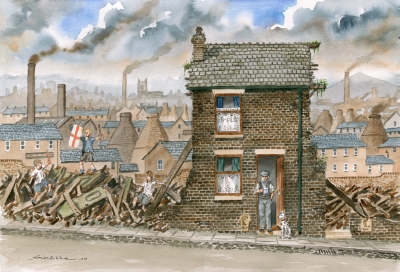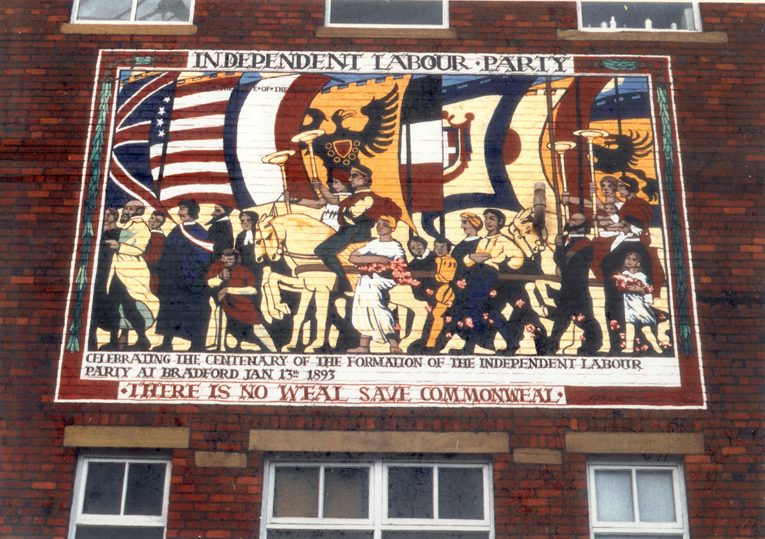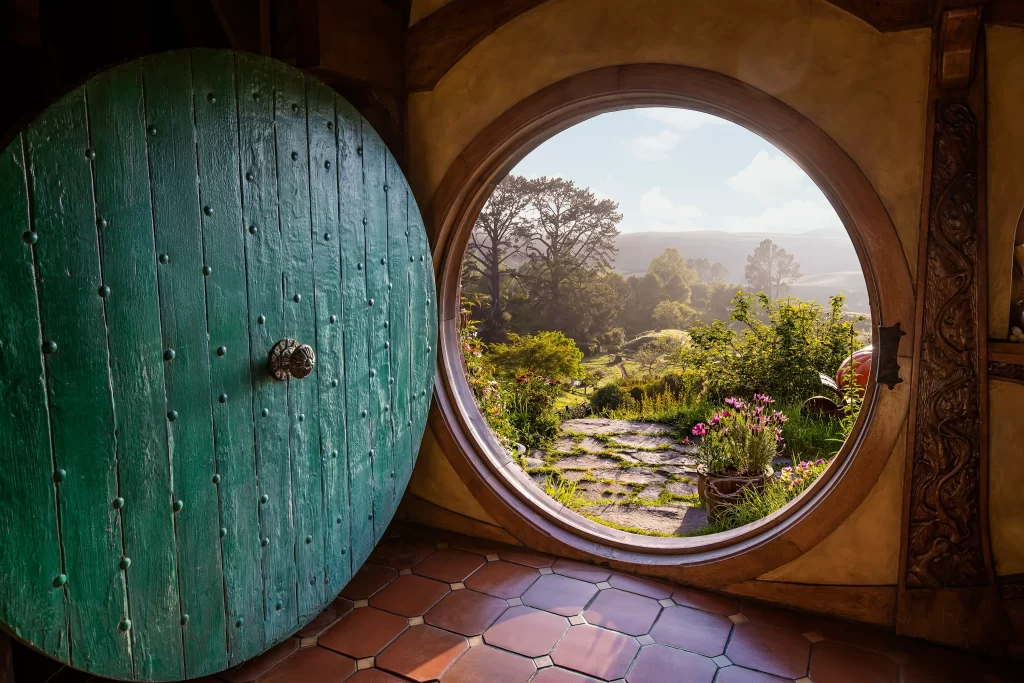When the Bishop of Bradford asked me back in 2022 to develop a strategy for the faith communities engagement with City of Culture I immediately researched previous examples to learn from them. I found a repeated experience of faith communities in the three previous City of Cultures (UK City of Culture is distinct and different from the European Capital of Culture, although many confuse the two). All the reports had seen faith communities feeling overlooked, disconnected and ‘done to’ for other people’s ends. They had attempted to engage through production and contributing artistic products or cultural artifices to the packed programme. Many committed significant resources to contributing to the programme with unique offerings but, when the year came, their offering was lost in the packed schedule and audiences did not connect with their work as much as they had hoped. This caused understandable disappointment and led to compounding a cynicism about the whole project.
I was clear, therefore, as we looked ahead to Bradford being the UK City of Culture in 2025, that the faith communities would be clear, from the outset, what a feasible expectation of their involvement should be. I suggested that our strategy should be underpinned by the word ‘patronage’. I proposed we ‘patronise the arts without patronising the artists.’ What I meant by this was that we should seek to become patrons akin to the old medieval system whereby we support and encourage the artists to produce work of great value and to play our appropriate role in its production. In practice this meant:
- to offer our resources to the arts and culture professionals for their use, e.g. space, stories, funding, etc.
- to attend and promote the arts and cultural offers and engage with artists in discussing their work and finding points of connection with them.
- to volunteer and encourage others to volunteer to ensure the events go smoothly and more people feel the programme is for them.
- and to play our part in (re)shaping the cultural narrative.
The problem with this strategy was that the word ‘patronage’ has negative connotations due to its obvious linguistic links with ‘patriarchy’. Even saying we should ‘patronise’ the arts, although technically correctly, is more commonly associated with condescension. This cultural rejection or negating of the whole ‘patri-‘ cluster of words makes the activities that are best described by them difficult to recommend or enact.
During his recent visit my father-in-law became aware that the word ‘patronus’, from the Harry Potter world, is Latin for ‘protector’. Although I was aware of this etymological root I hadn’t quite connected it with my current pondering on the nature and concept of patronage.
St George has been the official patron saint of England since Tudor times having been named the patron saint of the Order of the Garter by Edward III. George was of Cappadocian Greek descent, meaning he came from the region now known as Turkey. He, at no point, visited England and it is likely never knew of England. He was a Christian soldier in the Roman army but due to the persecution of Christianity he was martyred around the third century. He is now more famous for a legend that arose about him in the eleventh century. The story goes that George faced a fierce ‘dragon’ that was wreaking havoc in Libya and slaughtered it, thus saving the king’s daughter from being offered as a sacrifice. George’s bravery and rejection of monetary reward inspired the whole city to become Christian.
One can see why this story resonated with Edward III, who, though vastly outnumbered by the large French army still won several victories in battle. It is here, one could argue, that the English preference to the cultural narrative of ‘the underdog’ began. This particular social story echoes through to our time and continues to impact our collective decisions and instinctive responses, particular in times of conflict.
A patron saint historically was believed to be a saint who intercedes on behalf of a particular nation, craft, person, etc. They are elected by said nation, craft, person, etc. and looked to to protect and support their life and work. Although I understand the theological concept of the intercessions of dead saints and the wider concept of ‘the communion of saints’, I am not convinced by the rationale given and so don’t engage in the promotion of the idea in its common usage. I do, however, appreciate the power such personalities can have on particular people and communities. I believe the benefit is not about the spiritual intercession of the saint but the narrative construct that can inspire the living body that elects it as a patron. I happily celebrate patronal feast days and engage in the stories of saints on their particular anniversaries to pray for those that seek to imitate certain noble characteristics or feel particular resonance with them.
An issue has arisen, however, when I understand the patronage of saints in the way outlined and then seek to define the patronage of the Church to the Arts. In trying to square the circle I have also been thinking about Bradford Cathedral’s patronage of several parishes elsewhere in the Diocese. These patronal relationships are common in all parish churches across England. The patron is not the same as the patron saint of which the particular church is named. The patron has a particular role, historically held, to present particular candidates into the role of parish priest. In the 20th century most diocese went about collecting up ‘patronages’ in order for the Diocesan Bishop to have freedom to appoint who they wish to ecclesiastical livings. Some churches remain within specific organisational patronages (CPAS, The Church Society, Simeon’s Trust).
The Dean of Bradford has rightly, in my mind, decided to redevelop the role of the patron beyond just the recruitment process. In our strategy we have specifically named our aspiration to support and resource our patronage churches. This patronage will look different for each of our churches depending on needs. Some of our patronage churches are growing, lively places of faith with enough resources to sustain their important mission and ministry, whilst others are struggling in different ways. The immediate decision, to enact our strategy, was to offer our resource of clergy time to help maintain worship in all of the places by taking Eucharistic services when there is a vacancy. It has also meant that we have engaged with some in offering advice and consultation to assist in their own growth and development. The Dean also meets regularly with incumbents and encourages them personally.
If patronage is primarily about protection but also, in some way, narrative shaping, what might this mean both for the patronage relationship between the Cathedral and other churches and for the Church and the Arts?

Returning to the topic of patron saints, for a moment. Back in 2021, The Rest is History podcast did an episode on St Cuthbert. Tom Holland, historian and co-host of the podcast, was proposing to adopt St Cuthbert as the patron saint of England. He has developed this idea elsewhere and I am favourable to this suggestion due to the form the cult of St George can evolve into. The problem, I would argue, is that the story of St George shapes those who take it for their own collective story in a particular way: value is placed on defeating enemies with physical strength. That particular myth connects with some darker impulses of human beings and explains, for me, the way in which St George’s cross can now be adopted. Who we’ve chosen to ‘represent us’ in the world says something and gives, in my mind, an unhelpful foundation to the story we project outwards. Does St George focus others’ attention on particular characteristics of ‘English’ and not on other repeated behaviours and actions that we may want to be known for?
If St Cuthbert, on the other hand, were to be the patron saint of England how might it resonate with other parts of our national character?
St Cuthbert is described by Bede as ‘a very pleasant and affable man’ often citing his patience and forbearance as major characteristics. He is depicted, primarily, as a teacher, travelling to places ‘which others feared to visit and whose barbarity and squalor daunted other teachers.’ This brings out a different quality to our painful colonial past. I’m not suggesting that it justifies all, or even most, of the horrific, historical actions by our country on others’ but it does offer a little balance, suggesting that some of our explorations and ‘missions’ may have been done for other, more noble intentions. I am also not suggesting that the language used by Bede in the quote above is language that I would use to describe the many English people who have gone to other places and helped alleviate poverty and health crises.
St Cuthbert was also a reluctant public figure. This may be a personal resonance and not something that is shared widely by my fellow citizens but I get the sense that St Cuthbert was a home bird. He liked being in his own place and being called to go elsewhere was a cost to him. Now, it is true that the English are famous for our desire for home ownership. The data shows that we place a higher value on this than other nations.
The Englishman’s house is his castle.
Last month I mentioned Jeremy Paxman’s book, ‘The English: A Portrait of A People’. In it he explores the English character in its glory and its deep problems. He comes to a summation that I think is an interesting image of what it means to be English, as opposed to British.
Yet, for all claims that the country is ‘finished’, the attitudes of mind that made the English culture what it is – individualism, pragmatism, love of words and, above all, that glorious, fundamental cussedness – are unchanged.
Jeremy Paxman, ‘The English: A Portrait of a People’ (London: Penguin, 1999) p.264
This patronage would frame our sense of ourselves differently from the legend of St George. My impression is that the story of St George no longer resonates enough with us as a people (except during sporting competitions and military conflicts). The use of this dragon-fighting legend to frame and interpret the ‘Blitz spirit’ has been used to justify reckless political endeavours as we pose as miraculous underdogs. One can view the coming together, the forbearance and patience seen during the war through a different qualitative lens if we see it as following the St Cuthbert way. The motivation is different as is the character in which we move forward.

So what of patronage?
The role of a patron, I want to suggest, is to give shape to a person or communities’ cultural narrative. It is to direct them towards that which they want to express to others. To give them a narrative protection and to support them in their exploration and articulation of themselves into the world.
We might want to explore this at Bradford Cathedral as we interact with the churches to which we hold a patronage. This might be that our vision, values and narrative is shared with them. The protection we could offer these churches is in advocacy, particularly those who feel vulnerable to closure by bringing to them our charisms of hospitality, rootedness, interculturality and innovation. We don’t want this patronage relationship to be imposed but want it, like the election of patronal saints, to be desired for the benefit of the patronised (not condescended!)
The Church will need to be more confident in its own story, vision and values if it wants to position itself as a patron of the Arts. Like the relationship between the patronage churches and the Cathedral, ‘the Arts’ has not chosen or elected the Church as their patrons. How might each (potential) patron so inspire their (potential) patronage to look to them to help shape their own articulations of themselves to others? What might the offer of patronage look like in the 21st century where most artists turn to the patronal Arts Council, National Lottery or other trusts who all desire them to fulfil set strategic criteria that fit particular cultural values?




